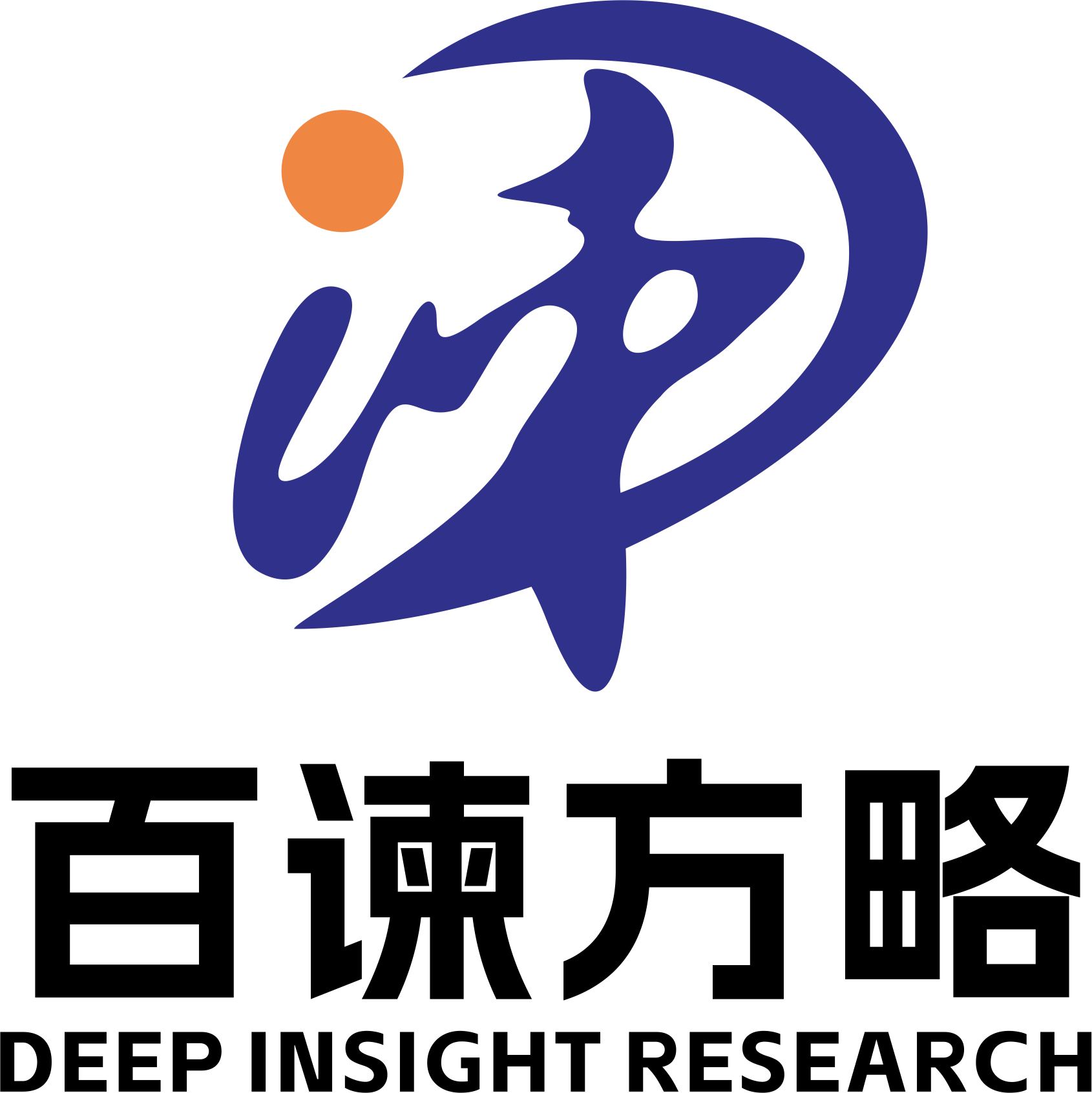Electronic Semiconductor Market Segment: The Global Electronic IMU Sensor Market Size will Reach USD 2049.3 Million in 2024
2024-07-24
An Inertial Measurement Unit (IMU) sensor is an advanced sensor device used in various electronic applications, including aerospace, robotics, automotive, and consumer electronics. These sensors typically combine accelerometers and gyroscopes, sometimes with magnetometers, to measure and provide precise information about an object's orientation, velocity, and gravitational forces. They are crucial for detecting and quantifying motion, direction, and speed changes, enabling precise navigation, stability, and control in diverse electronic systems. Electronic IMU sensors are key components in applications such as drone flight controls, virtual reality systems, autonomous vehicles, and wearable devices, allowing them to monitor motion and orientation with high accuracy and responsiveness.
In-depth Analysis of Factors Driving the Electronic IMU Sensor Market
Electronic Inertial Measurement Unit (IMU) sensors are critical components in the fields of high technology and automation, widely applied across various sectors. The following is a detailed analysis of the factors driving the electronic IMU sensor market:
- Automotive and Autonomous Driving Technology: The demand for IMU sensors in the automotive industry is steadily increasing, particularly with advancements in autonomous driving technology. IMU sensors are used to real-time measure vehicle orientation, direction, and acceleration, aiding in vehicle stability and navigation.
- Aerospace Applications: In aerospace applications such as aircraft, satellites, and missiles, IMU sensors are indispensable for navigation, attitude control, flight stability, and target tracking.
- Industrial Automation: IMU sensors are extensively used in industrial automation to monitor and control the motion and position of robots, automated guided vehicles (AGVs), and production lines.
- Consumer Electronics: IMU sensors find widespread application in consumer electronics such as smartphones, tablets, and virtual reality devices, supporting functionalities like screen rotation, game control, and gesture tracking.
- Medical Devices: IMU sensors are used in medical devices for applications such as motion analysis, rehabilitation therapy, and posture monitoring, assisting healthcare professionals in providing more accurate diagnostics and treatments.
- Military and Defense: The military and defense sectors require high-precision IMU sensors for critical tasks including missile guidance, aircraft stability, submarine navigation, and soldier tracking.
- Internet of Things (IoT): IMU sensors are employed in IoT devices for monitoring and control purposes, applicable in smart home devices, smart city solutions, and agricultural automation.
- Manufacturing and Aerospace Engineering: IMU sensors are used in manufacturing and aerospace engineering for applications like structural health monitoring, vibration analysis, and seismic measurement.
Detailed Study on Future Technological Trends of Electronic IMU Sensors
Electronic Inertial Measurement Unit (IMU) sensors are crucial high-precision sensors used for measuring and monitoring object motion, orientation, and acceleration. As technology advances and application areas expand, future technological trends will impact the performance, precision, and application scope of IMU sensors. The following is a deep analysis of future technological trends for electronic IMU sensors:
- High Precision and Stability: Future IMU sensors will continuously strive for higher precision and stability to meet the demands of applications requiring increased accuracy such as autonomous driving, drone navigation, and medical devices. This may involve more sophisticated sensor components, higher-resolution measurements, and advanced calibration techniques.
- Miniaturization and Integration: With technological progress, IMU sensors will become increasingly smaller while integrating multiple sensor components such as gyroscopes, accelerometers, and magnetometers. This will help reduce sensor size, lower power consumption, and provide greater flexibility across various applications.
- Low Power Design: Future IMU sensors will emphasize low-power designs to cater to applications like mobile devices and wireless sensor networks that require long-term operation. This includes using low-power electronic components and optimizing sensor data processing algorithms.
- Optical IMU Sensors: Optical IMU sensors, utilizing laser or optical components for motion measurement, represent an emerging technology. These sensors may replace traditional mechanical and electronic sensors in certain applications, offering higher accuracy and rapid response.
- MEMS Technology: Microelectromechanical systems (MEMS) technology will continue to drive the development of IMU sensors. MEMS sensors are easier to integrate and miniaturize, with lower costs, making them promising for widespread applications.
- 5G and IoT: The development of 5G networks and IoT will provide greater data transmission bandwidth and connectivity, expanding the application opportunities for IMU sensors. This will drive demand for high-performance IMU sensors.
- Autonomous Navigation Technology: The demand for autonomous navigation technology in fields such as autonomous vehicles, drones, and robots is increasing. IMU sensors will be core components in these applications, with future trends possibly involving more advanced autonomous navigation algorithms and hardware.
- Augmented Reality and Virtual Reality: Augmented Reality (AR) and Virtual Reality (VR) applications require highly accurate motion tracking and attitude measurement. IMU sensors will play a crucial role in AR and VR devices, with future advancements likely introducing more advanced IMU technologies for a more immersive experience.
In-depth Analysis of Limiting Factors for Electronic IMU Sensors
The electronic Inertial Measurement Unit (IMU) sensor market has extensive applications across various sectors but is also influenced by several limiting factors that may constrain market development. The following is a detailed analysis of limiting factors for the electronic IMU sensor market:
- Price Competition: The IMU sensor market faces intense price competition, especially in mass-produced sectors such as consumer electronics and automotive manufacturing. This competition may drive down sensor prices, reducing manufacturers' profit margins.
- Technological Complexity: High-precision and high-performance IMU sensors typically require complex technology and precise manufacturing processes. This makes it challenging for new manufacturers to enter the market, limiting market competition.
- Power Consumption: Some application areas have strict requirements for sensor power consumption, such as portable devices and wireless sensor networks. High-power IMU sensors may not be suitable for these applications, necessitating lower power consumption solutions.
- Environmental Conditions: The performance of IMU sensors may be limited under extreme environmental conditions such as high temperature, low temperature, high humidity, or high radiation, which could restrict their application scope.
- Calibration and Maintenance: IMU sensors require regular calibration and maintenance to ensure their performance and accuracy. This may increase the cost of use and maintenance, posing inconvenience for certain applications.
- Security and Privacy Issues: In some application areas like autonomous driving and military applications, security and privacy concerns related to IMU sensor data leakage or misuse could be limiting factors, posing serious security threats.
- Alternative Technologies: As technology advances, alternative technologies such as vision sensors and lidar may emerge in some application areas. These alternative technologies may offer advantages in certain aspects, thereby creating competitive pressure on the IMU sensor market.
- Regulations and Compliance: IMU sensor manufacturers need to comply with various international and regional regulations and standards to ensure the safety and compliance of their products. This may require additional time and resources, increasing the difficulty of market entry.
Analysis of Key Participants in the Global Electronic IMU Sensor Market
According to DIResearch, major participants in the global electronic IMU sensor market include Honeywell International, Northrop Grumman Corp, SAFRAN, Thales, Kearfott, KVH Industries, UTC, Systron Donner Inertial, IAI Tamam, Elop, L-3 Communications, VectorNav, Tronics, SBG Systems, Analog Devices, AOSense, MEGGITT, Sensonor, EPSON TOYOCOM, and JAE. The top five manufacturers globally hold approximately 75% of the market share.
Analysis of Current Status and Future Forecast of Global Electronic IMU Sensor Market Size
According to DIResearch, the global electronic IMU sensor market size is steadily expanding. By 2024, the market size is expected to reach USD 2049.3 million, with a projected increase to USD 2745.1 million by 2030, reflecting a compound annual growth rate (CAGR) of 4.99% from 2024 to 2030. North America dominates the global market, holding approximately 40% market share, followed by Europe and China, collectively accounting for nearly 50% share.
Research and Downstream Application Analysis of Global Electronic IMU Sensor Submarkets
According to DIResearch, electronic IMU sensors are segmented into several product categories: FOG, RLG, DTG, other mechanical sensors, Si/Quartz MEMS, HRG, and emerging technologies.
- Fiber Optic Gyroscope (FOG): FOG measures angular velocity by detecting relative displacement of light in optical fibers. It is known for high precision, long lifespan, and stability, making it suitable for high-performance navigation and attitude control applications.
- Ring Laser Gyroscope (RLG): RLG measures angular velocity based on the interference of light in a ring-shaped path. It offers high precision and sensitivity, ideal for applications in inertial navigation systems and precision navigation.
- Quartz Tuning Fork Gyroscope (DTG): DTG measures angular velocity by detecting frequency changes in quartz tuning forks. It is characterized by small size, light weight, and low power consumption, suitable for compact and portable applications.
- Other Mechanical Sensors: This category includes traditional mechanical gyroscopes and accelerometers, which, despite older technology, still play roles in specific applications.
- Silicon/Quartz Microelectromechanical Systems (MEMS): MEMS are miniature mechanical sensors manufactured using microfabrication technology, including accelerometers and gyroscopes. MEMS IMUs are valued for their small size, low cost, and low power consumption, applicable in consumer electronics such as smartphones and wearable devices.
- High-Performance Gyroscope (HRG): HRG is a high-precision, high-performance gyroscope commonly used in aerospace, navigation, and defense systems.
- Emerging Technologies: This refers to new inertial measurement technologies such as quantum gyroscopes and MEMS inertial navigation systems, offering higher precision, lower power consumption, and smaller size, gradually being applied across various sectors.
From a downstream application perspective, electronic IMU sensors are primarily utilized in defense, aerospace, and industrial sectors.
For details, please refer to the report "Global Electronic IMU Sensors Competitive Landscape Professional Research Report 2024"
Global Key Manufacturers of Electronic IMU Sensors Include:
Honeywell International
Northrop Grumman Corp
SAFRAN
Thales
Kearfott
KVH Industries
UTC
Systron Donner Inertial
IAI Tamam
Elop
L-3 Communications
VectorNav
Tronics
SBG systems
Analog Devices
AOSense
MEGGITT
Sensonor
EPSON TOYOCOM
JAE
Electronic IMU Sensors Product Segment Include:
FOG
RLG
DTG and Others Mechanical
Si / Quartz MEMS
HRG and Emerging technology
Electronic IMU Sensors Product Application Include:
Defense
Aerospace
Industria
Chapter Scope
Chapter 1: Product Research Range, Product Types and Applications, Market Overview, Market Situation and Trends
Chapter 2: Global Electronic IMU Sensors Industry PESTEL Analysis
Chapter 3: Global Electronic IMU Sensors Industry Porter’s Five Forces Analysis
Chapter 4: Global Electronic IMU Sensors Major Regional Market Size (Revenue, Sales, Price) and Forecast Analysis
Chapter 5: Global Electronic IMU Sensors Market Size and Forecast by Type and Application Analysis
Chapter 6: North America Electronic IMU Sensors Competitive Analysis (Market Size, Key Players and Market Share, Product Type and Application Segment Analysis, Countries Analysis)
Chapter 7: Europe Electronic IMU Sensors Competitive Analysis (Market Size, Key Players and Market Share, Product Type and Application Segment Analysis, Countries Analysis)
Chapter 8: China Electronic IMU Sensors Competitive Analysis (Market Size, Key Players and Market Share, Product Type and Application Segment Analysis, Countries Analysis)
Chapter 9: APAC (Excl. China) Electronic IMU Sensors Competitive Analysis (Market Size, Key Players and Market Share, Product Type and Application Segment Analysis, Countries Analysis)
Chapter 10: Latin America Electronic IMU Sensors Competitive Analysis (Market Size, Key Players and Market Share, Product Type and Application Segment Analysis, Countries Analysis)
Chapter 11: Middle East and Africa Electronic IMU Sensors Competitive Analysis (Market Size, Key Players and Market Share, Product Type and Application Segment Analysis, Countries Analysis)
Chapter 12: Global Electronic IMU Sensors Competitive Analysis of Key Manufacturers (Sales, Revenue, Market Share, Price, Regional Distribution and Industry Concentration)
Chapter 13: Key Company Profiles (Product Portfolio, Sales, Revenue, Price and Gross Margin)
Chapter 14: Industrial Chain Analysis, Include Raw Material Suppliers, Distributors and Customers
Chapter 15: Research Findings and Conclusion
Chapter 16: Methodology and Data Sources
DIResearch provides market research reports, focus on market segmentation research, industry research, market status and forecasts, players competition analysis, company positioning, downstream customer and product market analysis, etc. We effectively analyze complex data and information through professional methods, and finally present the research content of customer needs in the form of reports, helping companies make more valuable business decisions, helping companies improve operational efficiency and find new growth points.



